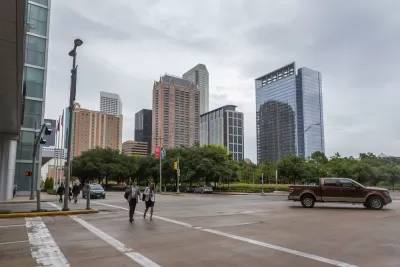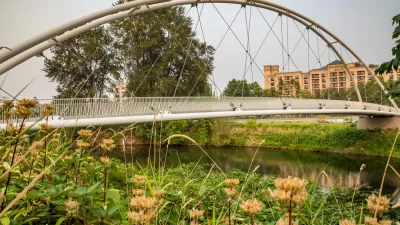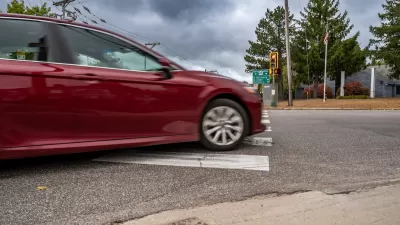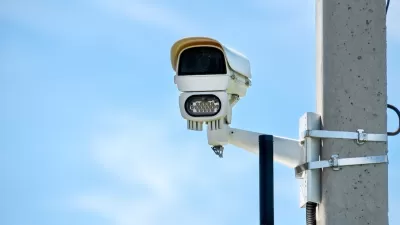The city's roadways were built to prioritize fast-moving traffic, not safety. With a new Vision Zero plan, that could change.

Why does Houston have so many pedestrian deaths? "[A]ccording to Houston’s chief transportation planner, David Fields, it’s because Houston roadways weren’t built primarily to protect pedestrians," reports Kirkland An. "'Historically, Houston has built its transportation to move people fast,' Fields said. 'And what that means is, we have not prioritized safety.'" Based on data from the city, "60% of traffic deaths and serious injuries occur on only 6% of its roads."
"Last year, Houston Mayor Sylvester Turner announced a Vision Zero plan: to reduce all traffic deaths—including pedestrian deaths—to zero by 2030," joining over 40 other cities that have taken a similar Vision Zero pledge. The plan "includes a citywide campaign on street safety, designing streets to support safer speeds and constructing sidewalks and bicycle facilities." In addition to speed limits and new safety infrastructure, "[t]he city also considers planning elements like 'corner radius, the width of the street, the width of each lane, and where you put parking,'" Fields told the Houston Chronicle.
Like in other cities around the country, "[t]hose affected [in Houston] were more likely to be part of low-income and minority communities." According to Fields, "[t]his tells us we have not invested equitably in safe transportation across the city." While the Vision Zero plan may seem ambitious for such a car-centric city, he says, "every life saved on the path to zero is valuable."
FULL STORY: Why are Houston's roads so dangerous and unwalkable? We prioritized driving fast.

Study: Maui’s Plan to Convert Vacation Rentals to Long-Term Housing Could Cause Nearly $1 Billion Economic Loss
The plan would reduce visitor accommodation by 25,% resulting in 1,900 jobs lost.

North Texas Transit Leaders Tout Benefits of TOD for Growing Region
At a summit focused on transit-oriented development, policymakers discussed how North Texas’ expanded light rail system can serve as a tool for economic growth.

Using Old Oil and Gas Wells for Green Energy Storage
Penn State researchers have found that repurposing abandoned oil and gas wells for geothermal-assisted compressed-air energy storage can boost efficiency, reduce environmental risks, and support clean energy and job transitions.

Santa Barbara Could Build Housing on County Land
County supervisors moved forward a proposal to build workforce housing on two county-owned parcels.

San Mateo Formally Opposes Freeway Project
The city council will send a letter to Caltrans urging the agency to reconsider a plan to expand the 101 through the city of San Mateo.

A Bronx Community Fights to Have its Voice Heard
After organizing and giving input for decades, the community around the Kingsbridge Armory might actually see it redeveloped — and they want to continue to have a say in how it goes.
Urban Design for Planners 1: Software Tools
This six-course series explores essential urban design concepts using open source software and equips planners with the tools they need to participate fully in the urban design process.
Planning for Universal Design
Learn the tools for implementing Universal Design in planning regulations.
Ascent Environmental
Borough of Carlisle
Institute for Housing and Urban Development Studies (IHS)
City of Grandview
Harvard GSD Executive Education
Toledo-Lucas County Plan Commissions
Salt Lake City
NYU Wagner Graduate School of Public Service





























